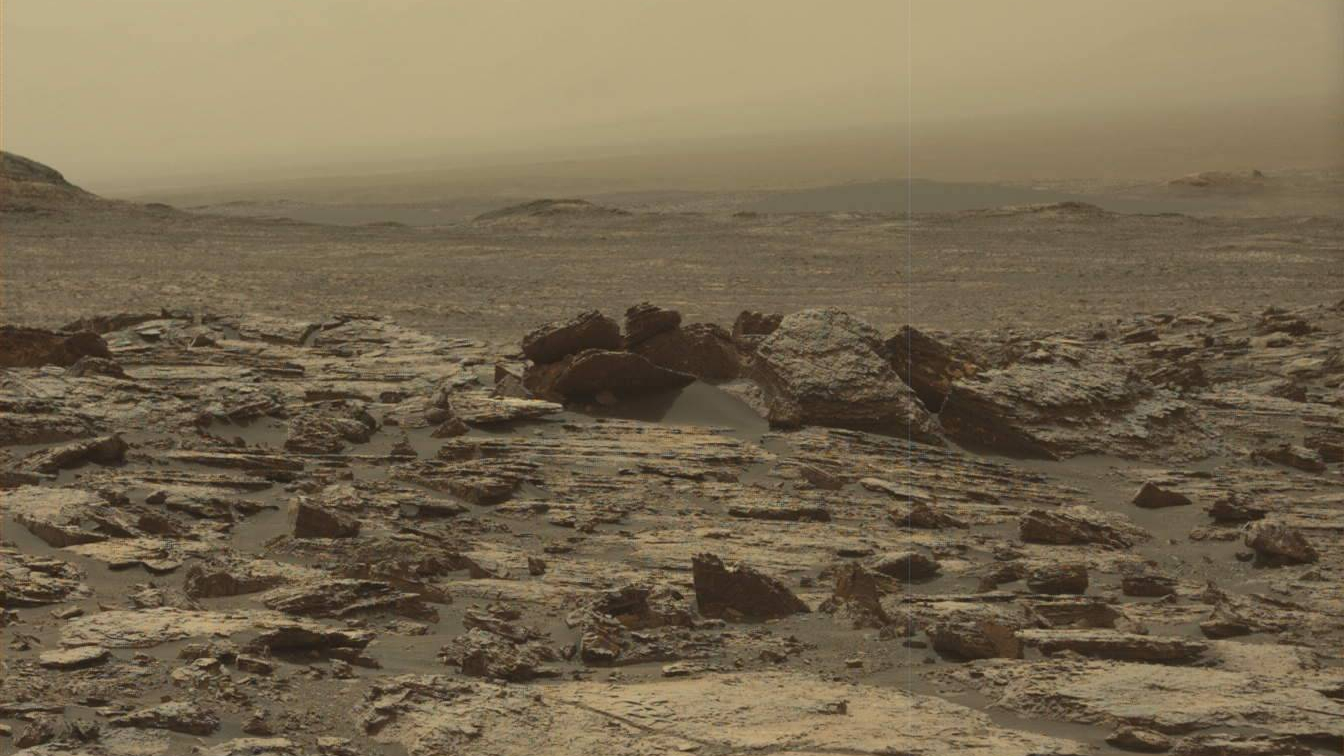
The Curiosity Mars rover has detected intriguing chemical evidence, in the form of anomalous amounts of manganese oxide, which points to Mars having had not only a habitable environment billions of years ago, but also one possibly inhabited by microbes.
NASA's Curiosity is exploring the giant 154-kilometer (about 96-mile) diameter Gale crater, where the rover landed in 2012. Curiosity's discoveries have already established that the crater was at least partially flooded long ago, although the evidence for this has been contested. However, the rover's latest findings not only strengthen the argument for an ancient lake, but also suggest that conditions within the lake were conducive to life.
The evidence is associated with the compound manganese oxide. Curiosity first found small quantities of manganese oxide in Gale Crater in 2016, but now it has discovered much greater abundances of manganese oxide in sedimentary bedrocks of a mudstone geological unit called the Murray Formation. The Murray Formation is found on the flank of Mount Sharp in the middle of the crater.
Related: NASA's Curiosity Mars rover begins exploring possible dried-up Red Planet river
The manganese oxide was identified by Curiosity's ChemCam instrument, which fires a laser at rocks that scientists wish to study. The laser heats a small patch of a rock's surface, thereby vaporizing it, which results in a small cloud of plasma that ChemCam's onboard camera and spectrometer can study from a distance to determine the ablated material's composition. ChemCam discovered mudstone that was enriched in manganese oxide by up to 45%.
On Earth, manganese oxide is commonly found in lakebeds or river deltas where there are high oxidizing conditions. Furthermore, microbes that exist in those environments are able to help catalyze the oxidation process.
Usually, this process requires a steady stream of oxygen, which is in short supply on Mars. The previously discovered small amounts of manganese oxide found on Mars in 2016 can be explained without significant quantities of oxygen, but the large abundances discovered in the Murray Formation are another matter entirely. To reach such abundances, the oxidation process would require a significant amount of oxygen.
"It is difficult for manganese oxide to form on the surface of Mars, so we didn't expect to find it in such high concentrations in a shoreline deposit," said lead researcher Patrick Gasda of the Los Alamos National Laboratory in a statement. "On Mars, we don't have evidence for life, and the mechanism to produce oxygen in Mars' ancient atmosphere is unclear, so how the manganese oxide was formed and concentrated here is really puzzling."
One clue is in the nature of the mudstone sediments that the manganese oxide was found in. The rocks enriched in manganese oxide were found at a location between two geological units in the Murray Formation. One unit is nicknamed Sutton Island and seems to represent sediments laid down at the edge of a lake; the other, nicknamed Blunts Point, would have been deeper in the lake.
The manganese-oxide-enriched mudstone is coarser, with larger grains than bedrock elsewhere in the crater where only small abundances of the compound have been discovered. This supports the theory that the Sutton Island/Blunts Point region is either the site of an ancient river delta that once emptied into the lake, or a shoreline of the lake, both of which represent locations where larger-grained sediments would have been preferentially laid down. The larger grains would have contributed to forming a more porous bedrock than the fine-grained mudstone seen elsewhere in Gale Crater — mudstone that is presumably from much deeper in the lake. This porosity would have allowed groundwater to pass through more freely. The manganese could have percolated out of this groundwater as it passed through the coarse-grained mudstone, the scientists say, thus becoming concentrated within the rocks. Where the oxygen came from to oxidize it, however, remains a puzzle.
"These findings point to larger processes occurring in the Martian atmosphere or surface water and show that more work needs to be done to understand oxidation on Mars," said Gasda.
The presence of manganese oxide also bolsters the possibility that microbial life could have existed within the lake. Not only can microbes catalyze the oxidation of manganese, but they are also potentially able to use manganese's many oxidation states as a source of chemical energy for their metabolisms, as microbes do on Earth. In other words, in a way, the abundance of manganese oxide is perhaps an indirect biosignature.
"The Gale lake environment, as revealed by these ancient rocks, gives us a window into a habitable environment that looks surprisingly similar to places on Earth today," said Los Alamos' Nina Lanza, who is the Principal Investigator for ChemCam. "Manganese minerals are common in the shallow, oxic waters found on lake shores on Earth, and it's remarkable to find such recognizable features on ancient Mars."
The findings were published on May 1 in the Journal of Geophysical Research: Planets.







